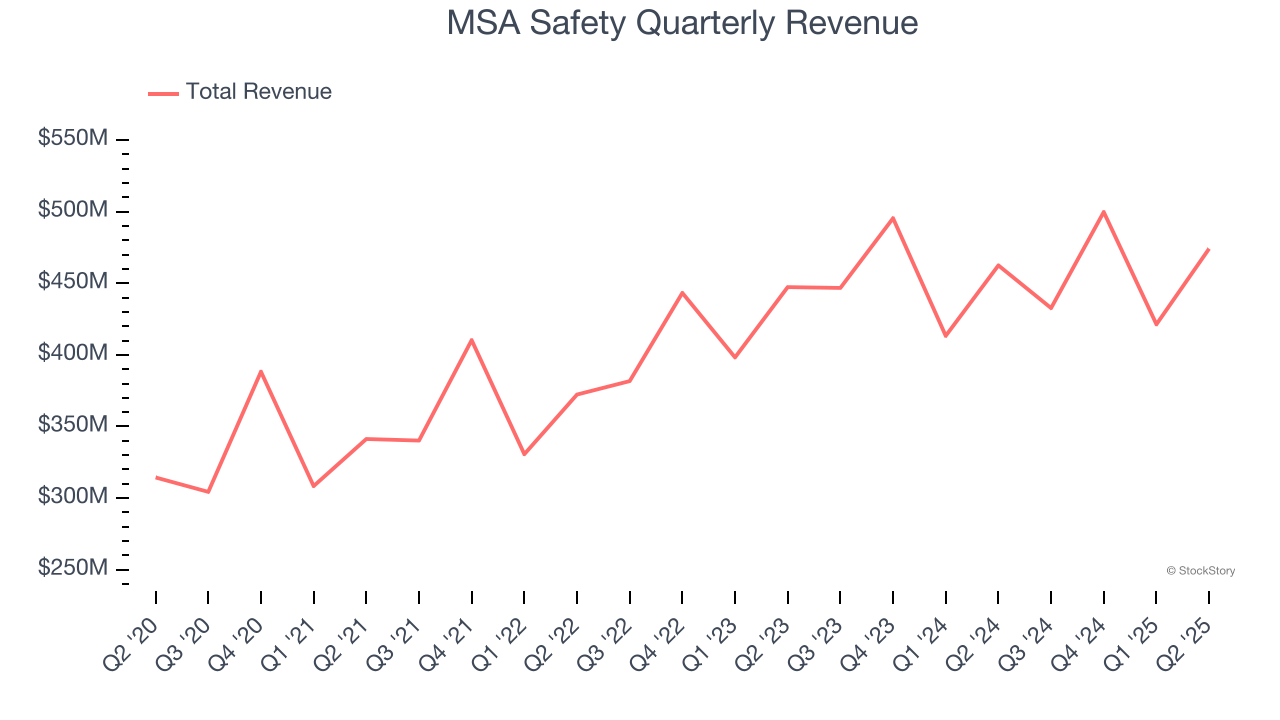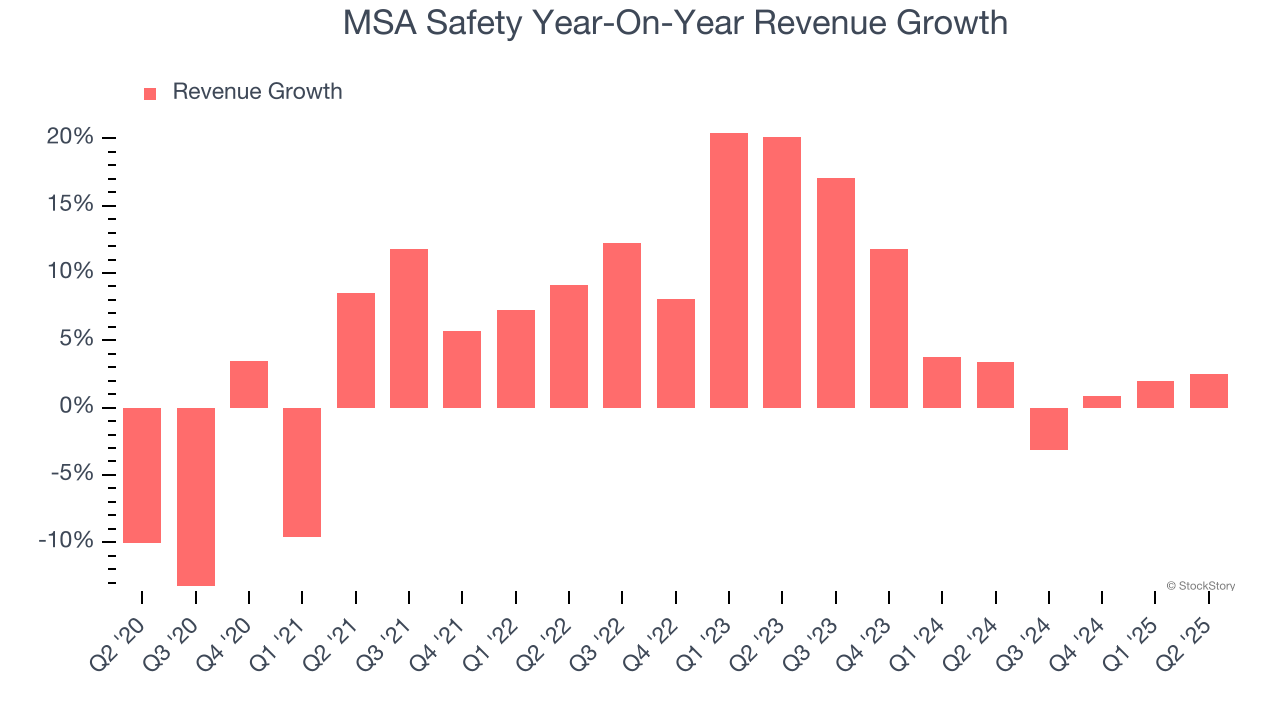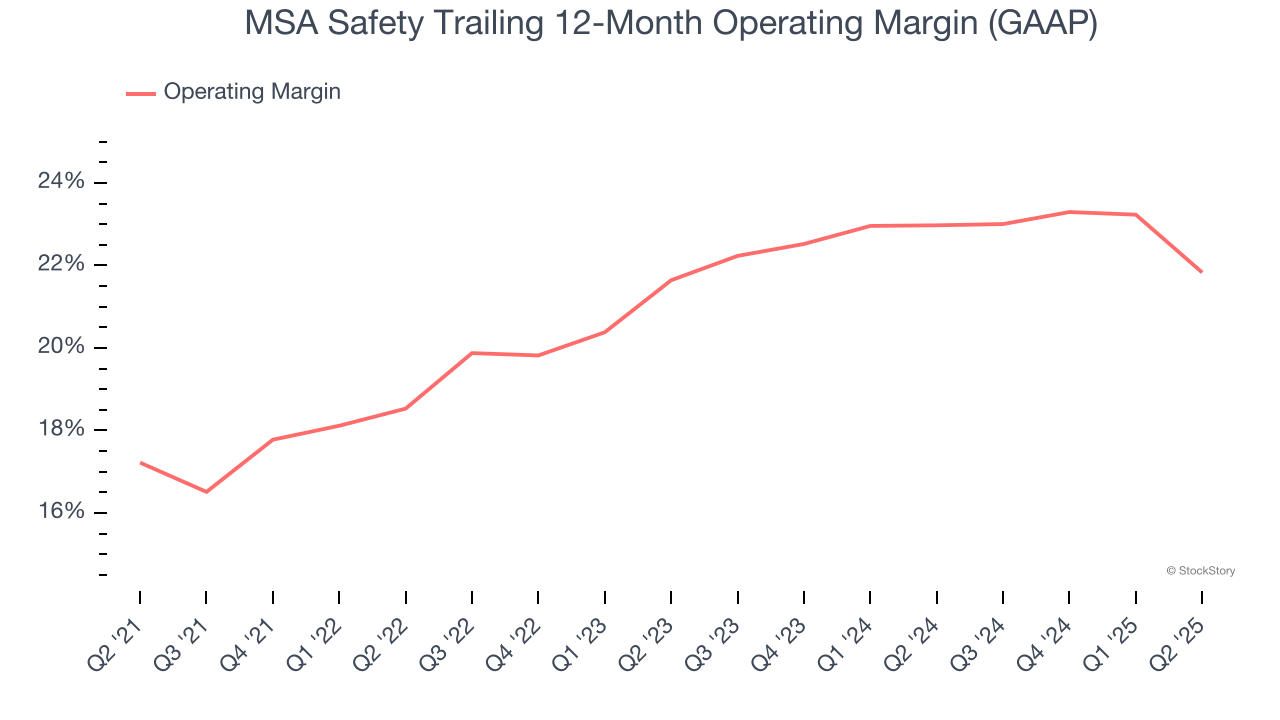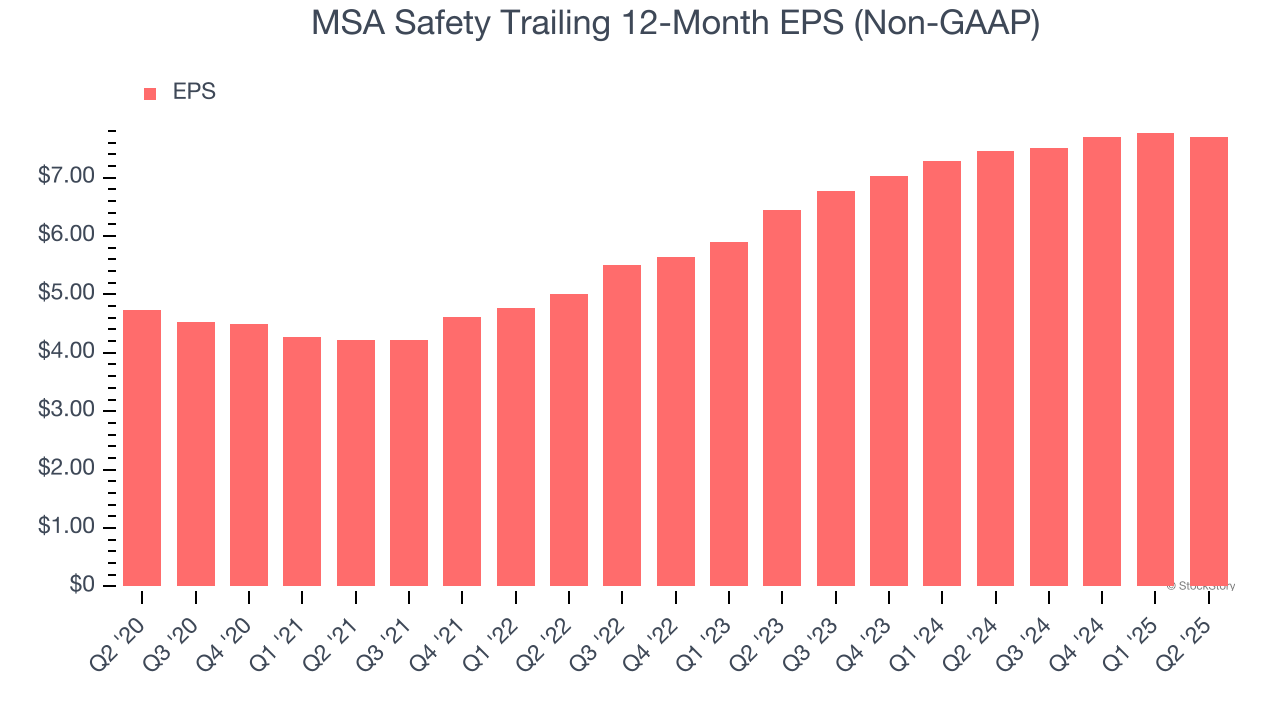
Safety equipment manufacturer MSA Safety (NYSE:MSA) reported Q2 CY2025 results exceeding the market’s revenue expectations, with sales up 2.5% year on year to $474.1 million. Its non-GAAP profit of $1.93 per share was 10% above analysts’ consensus estimates.
Is now the time to buy MSA Safety? Find out by accessing our full research report, it’s free.
MSA Safety (MSA) Q2 CY2025 Highlights:
- Revenue: $474.1 million vs analyst estimates of $447.8 million (2.5% year-on-year growth, 5.9% beat)
- Adjusted EPS: $1.93 vs analyst estimates of $1.76 (10% beat)
- Adjusted EBITDA: $116.5 million vs analyst estimates of $105 million (24.6% margin, 10.9% beat)
- The company maintained its low-single-digit full-year organic sales growth outlook for 2025, while acknowledging ongoing risk due to macroeconomic factors
- Operating Margin: 18.1%, down from 23.5% in the same quarter last year
- Free Cash Flow Margin: 8%, similar to the same quarter last year
- Market Capitalization: $6.89 billion
"Our second quarter financial performance demonstrates our team's commitment to our Accelerate strategy and creating long-term value for our stakeholders," said Steve Blanco, MSA Safety President and CEO.
Company Overview
Founded in 1914 as Mine Safety Appliances to protect coal miners from dangerous gases, MSA Safety (NYSE:MSA) designs and manufactures advanced safety products that protect workers and facilities across industries including fire service, energy, construction, and manufacturing.
Revenue Growth
Examining a company’s long-term performance can provide clues about its quality. Any business can put up a good quarter or two, but many enduring ones grow for years.
With $1.83 billion in revenue over the past 12 months, MSA Safety is a mid-sized business services company, which sometimes brings disadvantages compared to larger competitors benefiting from better economies of scale. On the bright side, it can still flex high growth rates because it’s working from a smaller revenue base.
As you can see below, MSA Safety’s sales grew at a decent 5.8% compounded annual growth rate over the last five years. This shows its offerings generated slightly more demand than the average business services company, a useful starting point for our analysis.

Long-term growth is the most important, but within business services, a half-decade historical view may miss new innovations or demand cycles. MSA Safety’s recent performance shows its demand has slowed as its annualized revenue growth of 4.6% over the last two years was below its five-year trend. 
This quarter, MSA Safety reported modest year-on-year revenue growth of 2.5% but beat Wall Street’s estimates by 5.9%.
Looking ahead, sell-side analysts expect revenue to grow 4.5% over the next 12 months, similar to its two-year rate. This projection doesn't excite us and suggests its newer products and services will not accelerate its top-line performance yet.
Today’s young investors won’t have read the timeless lessons in Gorilla Game: Picking Winners In High Technology because it was written more than 20 years ago when Microsoft and Apple were first establishing their supremacy. But if we apply the same principles, then enterprise software stocks leveraging their own generative AI capabilities may well be the Gorillas of the future. So, in that spirit, we are excited to present our Special Free Report on a profitable, fast-growing enterprise software stock that is already riding the automation wave and looking to catch the generative AI next.
Operating Margin
MSA Safety has been a well-oiled machine over the last five years. It demonstrated elite profitability for a business services business, boasting an average operating margin of 20.7%.
Analyzing the trend in its profitability, MSA Safety’s operating margin rose by 4.6 percentage points over the last five years, as its sales growth gave it operating leverage.

In Q2, MSA Safety generated an operating margin profit margin of 18.1%, down 5.4 percentage points year on year. This contraction shows it was less efficient because its expenses grew faster than its revenue.
Earnings Per Share
Revenue trends explain a company’s historical growth, but the long-term change in earnings per share (EPS) points to the profitability of that growth – for example, a company could inflate its sales through excessive spending on advertising and promotions.
MSA Safety’s EPS grew at a solid 10.2% compounded annual growth rate over the last five years, higher than its 5.8% annualized revenue growth. This tells us the company became more profitable on a per-share basis as it expanded.

We can take a deeper look into MSA Safety’s earnings to better understand the drivers of its performance. As we mentioned earlier, MSA Safety’s operating margin declined this quarter but expanded by 4.6 percentage points over the last five years. This was the most relevant factor (aside from the revenue impact) behind its higher earnings; interest expenses and taxes can also affect EPS but don’t tell us as much about a company’s fundamentals.
Like with revenue, we analyze EPS over a shorter period to see if we are missing a change in the business.
For MSA Safety, its two-year annual EPS growth of 9.3% is similar to its five-year trend, implying stable earnings.
In Q2, MSA Safety reported adjusted EPS at $1.93, down from $2.01 in the same quarter last year. Despite falling year on year, this print beat analysts’ estimates by 10%. Over the next 12 months, Wall Street expects MSA Safety’s full-year EPS of $7.69 to grow 8.6%.
Key Takeaways from MSA Safety’s Q2 Results
We were impressed by how significantly MSA Safety blew past analysts’ revenue expectations this quarter. We were also glad its EPS outperformed Wall Street’s estimates. The company maintained its low-single-digit full-year organic sales growth outlook for 2025, while acknowledging ongoing risk due to macroeconomic factors. Zooming out, we think this quarter featured some important positives but the commentary around guidance adds some uncertainty to the picture, something investors don't love. Shares traded down 1.4% to $175 immediately following the results.
So should you invest in MSA Safety right now? When making that decision, it’s important to consider its valuation, business qualities, as well as what has happened in the latest quarter. We cover that in our actionable full research report which you can read here, it’s free.
